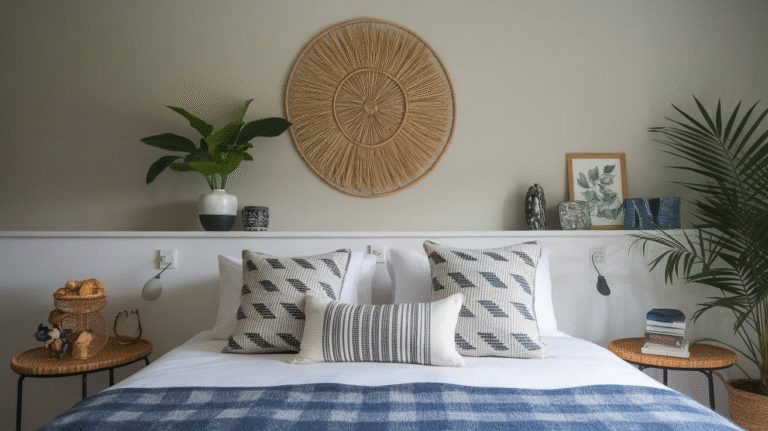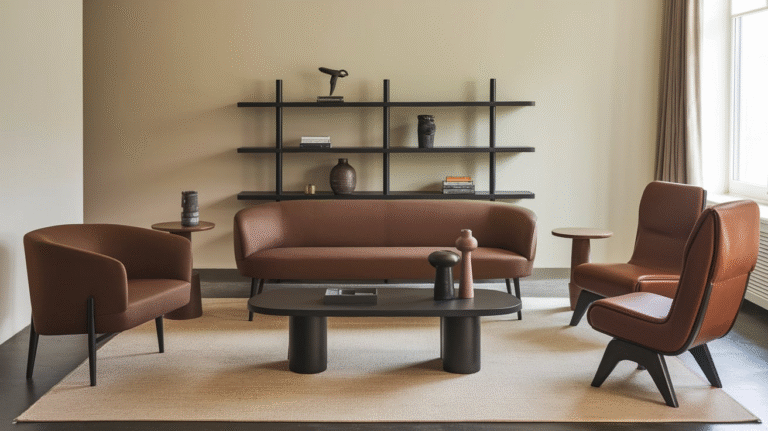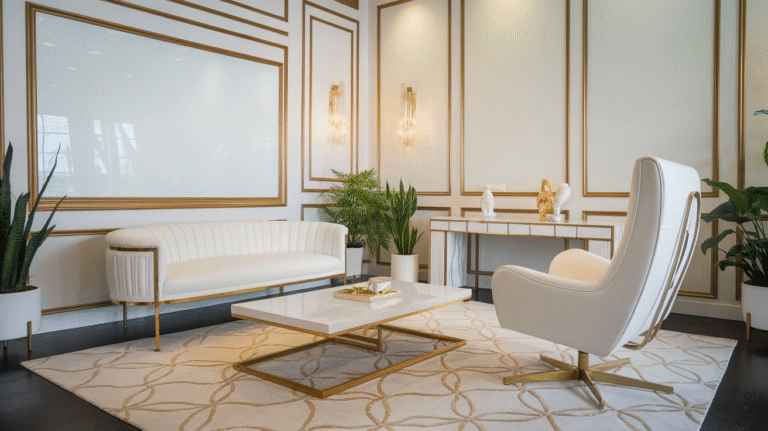20 Small Room Makeover Ideas

Making over a small room can feel like trying to fit an elephant into a teacup.
The trick is not to make the space bigger—because, unless you’re planning a construction project, that’s not happening—but to make it feel bigger, fresher, and more functional.
I’ve spent years helping people transform their cramped spaces into rooms they actually love being in.
1. Use Light, Reflective Colors
If your small room feels like it’s closing in on you, your wall color might be the culprit. Dark colors absorb light, making the room feel smaller, while light, reflective shades—think soft whites, pale grays, warm creams, and pastels—bounce light around, making the space feel airy.
2. Add Large Mirrors Strategically
Mirrors are the oldest trick in the small-room design book for a reason—they double the perception of space. Place a large mirror opposite a window to reflect natural light or behind a dining table to create depth.
3. Opt for Multi-Functional Furniture
When space is at a premium, every piece of furniture needs to earn its keep. Look for:
- Ottomans with storage
- Beds with drawers underneath
- Desks that fold into the wall
Statistically, multi-functional furniture can reduce the need for 25–35% of additional items in a small space, according to interior design efficiency studies. I once swapped out a friend’s bulky coffee table for a storage ottoman, and suddenly her living room had both more seating and hidden storage.
4. Use Vertical Space
When you can’t expand outward, go upward. Installing shelves, tall bookcases, or hanging storage allows you to keep the floor clear.
- Floating shelves over door frames can store books or décor.
- Tall wardrobes draw the eye up, making ceilings appear higher.
- Even in kitchens, vertical magnetic strips for knives save drawer space.
5. Invest in Clear or Lucite Furniture
Transparent furniture visually disappears, making the space look bigger while still being functional.
- Clear acrylic chairs are perfect for dining nooks.
- Glass coffee tables open up floor space visually.
- In my last apartment, I replaced two wooden chairs with Lucite ones, and the room instantly felt less cluttered.
6. Go Big on a Statement Piece
This might sound counterintuitive, but one large statement piece—like a bold sofa or oversized artwork—can actually make a small room feel more grounded and intentional than filling it with lots of tiny items.
- Small items create visual noise; one big focal point makes the space feel designed.
- Choose a piece that reflects your personality so it draws attention away from the size of the room.
7. Keep the Floor Visible
The more floor you can see, the bigger the space feels.
- Use furniture with legs instead of skirted bases.
- Avoid heavy rugs that cover the entire floor in darker shades.
- Raised beds and sofas let light pass underneath, giving an airy feel.
8. Use Sliding Doors Instead of Swing Doors
A regular hinged door can eat up 9–10 square feet of space just in swing clearance. Replacing it with a sliding barn door or pocket door frees up valuable real estate.
- Ideal for bedrooms, closets, and bathrooms.
- In one project, switching to sliding doors allowed us to add an entire extra bookshelf in what was once “door swing space.”
9. Limit the Color Palette
Using too many colors can make a room feel chopped up. Stick to two or three main colors and repeat them throughout the space for a cohesive look.
- Example: white walls, light oak wood tones, and soft blue accents.
- In small rooms, the eye should move smoothly without abrupt color changes.
10. Incorporate Hidden Storage
The quickest way to make a small room feel bigger? Reduce visible clutter.
- Under-bed drawers
- Storage benches
- Built-in window seats with hidden compartments
- According to a National Association of Realtors survey, 77% of buyers said built-in storage was a major selling point.
11. Choose Leggy, Slim Furniture
Bulky furniture overwhelms a small space. Instead, go for slim profiles and pieces with legs.
- Mid-century modern styles work well here.
- This trick allows light and sightlines to pass under furniture, extending the visual space.
12. Use Rugs to Define Areas
In a small room, especially open-plan spaces, rugs help define areas without using physical dividers.
- A rug under a bed frames the sleeping area.
- In studios, a rug under the sofa sets apart the “living” zone from the “sleeping” zone.
- Keep patterns subtle to avoid overpowering the room.
13. Add More Light Sources
One central ceiling light isn’t enough. Layer your lighting with:
- Floor lamps
- Wall sconces
- Table lamps
Light bounces around the room, eliminating dark corners that make spaces feel smaller. A 2023 lighting design survey showed multi-layer lighting improves spatial perception in compact areas by up to 40%.
14. Hang Curtains High and Wide
Curtains hung close to the ceiling, even if your windows are much lower, create the illusion of taller ceilings.
- Extend curtain rods several inches past the window frame to make windows appear wider.
- Use lightweight fabrics to keep things airy.
15. Mount the TV on the Wall
Bulky TV stands take up unnecessary floor space. Mounting your TV not only saves space but also creates a sleeker look.
- Use the freed-up area for storage or decorative items.
- Cord covers can hide wires for a clean finish.
16. Use Foldable or Nesting Furniture
When you’re short on space, flexibility is key.
- Nesting tables tuck away when not in use.
- Fold-out desks create an instant office.
- Folding dining tables can expand only when guests arrive.
17. Add Greenery (But Keep It Vertical)
Plants breathe life into a small room, but too many floor pots can make it crowded.
- Use wall-mounted planters or hanging baskets.
- Choose tall, slim plants like snake plants to draw the eye upward.
- In my own micro-apartment, a single hanging pothos transformed a blank wall without eating up floor space.
18. Keep Décor Minimal but Impactful
Every object in a small room should have purpose or personality. Avoid over-accessorizing.
- Instead of ten small knick-knacks, go for one or two bold art pieces.
- A single statement vase with fresh flowers beats a shelf crammed with random items.
19. Use Built-Ins Where Possible
Custom built-ins maximize every inch of space.
- Floor-to-ceiling shelves, window seats, and corner desks fit perfectly without wasted space.
- While they require an upfront investment, they increase both functionality and home value.
- Many real estate agents report built-ins as one of the top features buyers notice in smaller homes.
20. Keep Pathways Clear
It sounds obvious, but cluttered walkways make a room feel smaller and more stressful to navigate.
- Arrange furniture to allow easy movement.
- Keep at least 30 inches of clearance in main pathways.
- If you’re constantly sidestepping furniture, it’s time to rethink your layout.
Conclusion
Small rooms are like puzzles—you can either get frustrated by the limited pieces or enjoy the challenge of fitting them together perfectly. The key is maximizing space, minimizing clutter, and being intentional with every design choice.
Whether it’s installing mirrors, swapping bulky furniture for multi-functional pieces, or simply changing the paint color, these changes can make your small room feel bigger, brighter, and more inviting without spending a fortune.




